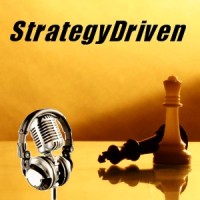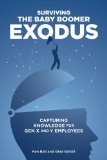StrategyDriven Podcast Special Edition 52a – An Interview with Ken Ball and Gina Gotsill, co-authors of Surviving the Baby Boomer Exodus, part 1 of 2

Special Edition 52a – An Interview with Ken Ball and Gina Gotsill, co-authors of Surviving the Baby Boomer Exodus, part 1 of 2 explores methods for effectively capturing, retaining, and transferring the knowledge of departing workers thereby enabling those who remain to continue to use this hard-won information to the benefit of the organization. During our discussion, Ken Ball and Gina Gotsill, co-authors of Surviving the Baby Boomer Exodus: Capturing Knowledge for Gen X and Y Employees, share with us their insights and illustrative examples regarding:
the defining characteristics of Baby Boomers, Gen Xers, and Millennials
- why the retirement of Baby Boomers is of particular concern with respect to organizational knowledge retention and which industries are at the greatest risk of knowledge loss
- the direct and ancillary benefits of knowledge retention programs
Additional Information
Ken and Gina’s book, Surviving the Baby Boomer Exodus: Capturing Knowledge for Gen X and Y Employees (Course Technology PTR, Cengage Learning 2010), can be purchased by clicking here
.
Final Request…
The strength of our community grows with the additional insights brought by our expanding member base. Please consider rating us on iTunes by clicking here. Rating the StrategyDriven Podcast and providing your comments online improves our ranking and helps us attract new listeners which, in turn, helps us grow our community.
Thank you again for listening to the StrategyDriven Podcast!
About the Author


For more information about Ken Ball and Gina Gotsill and Surviving the Baby Boomer Exodus (Course Technology PTR, Cengage Learning 2010), please visit their website www.survivingtheboomerexodus.com.
Podcast: Play in new window | Download (Duration: 28:17 — 38.9MB)
Subscribe: RSS


 Direct management observation and immediate feedback is the best tool for reinforcing performance expectations among employees. And while such reinforcement is optimally effective at maintaining high performance levels when given consistently over time, some management observation programs become a checklist task for executives, managers, and supervisors; resulting in the majority of observations being performed at the end of the observation cycle or in clusters during a narrow time frame within the cycle. Workers learn that standard adhering performance reinforcement only occurs during a very brief period within the cycle and that substandard work will typically not be observed and behaviors corrected the rest of the time. Work behavior quickly aligns with the pattern of expectation reinforcement; sub-optimizing overall performance and adversely impacting the observation program’s effectiveness.
Direct management observation and immediate feedback is the best tool for reinforcing performance expectations among employees. And while such reinforcement is optimally effective at maintaining high performance levels when given consistently over time, some management observation programs become a checklist task for executives, managers, and supervisors; resulting in the majority of observations being performed at the end of the observation cycle or in clusters during a narrow time frame within the cycle. Workers learn that standard adhering performance reinforcement only occurs during a very brief period within the cycle and that substandard work will typically not be observed and behaviors corrected the rest of the time. Work behavior quickly aligns with the pattern of expectation reinforcement; sub-optimizing overall performance and adversely impacting the observation program’s effectiveness. Nancy Duarte, author of
Nancy Duarte, author of